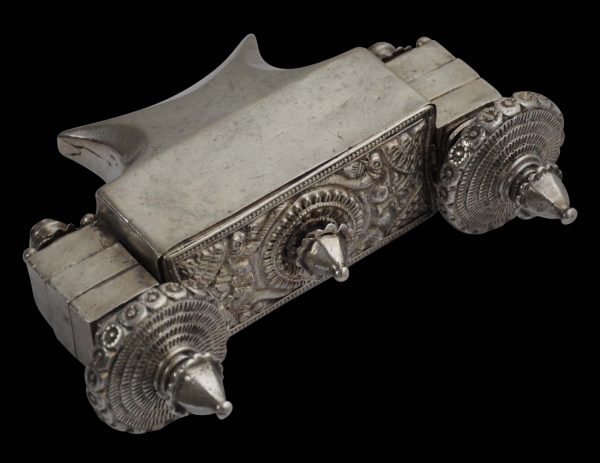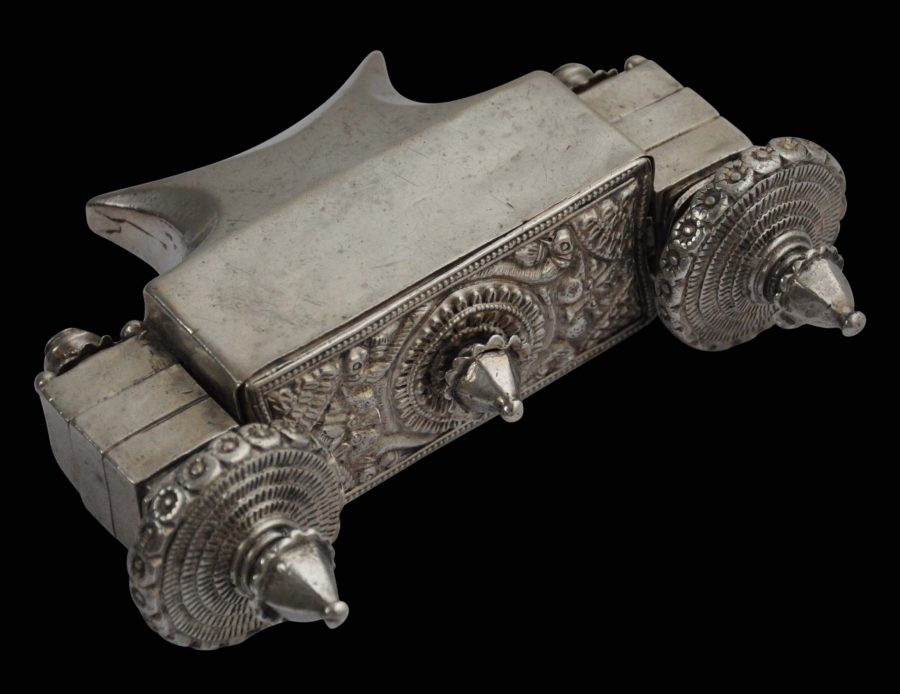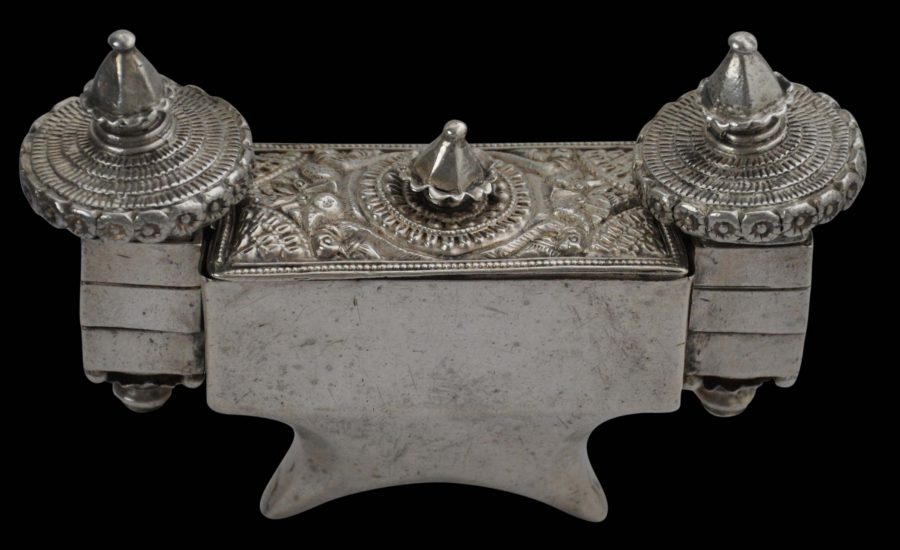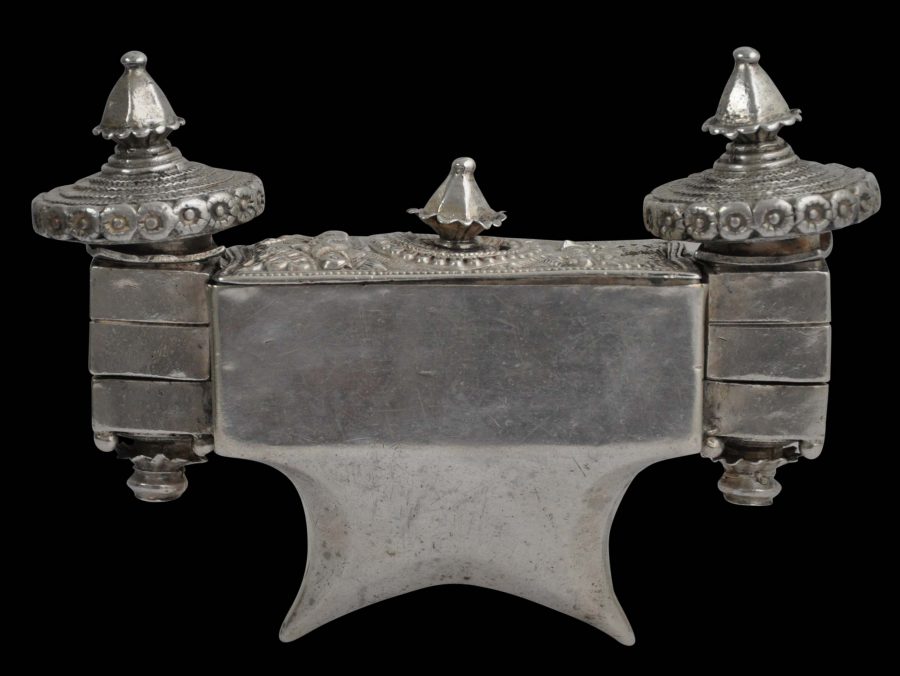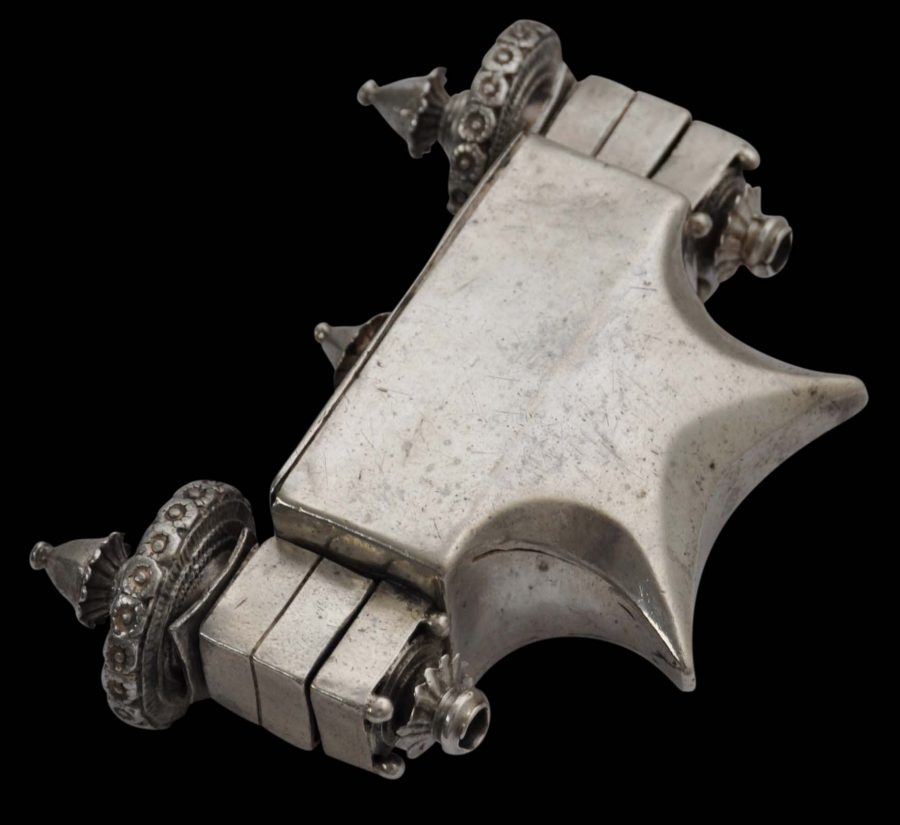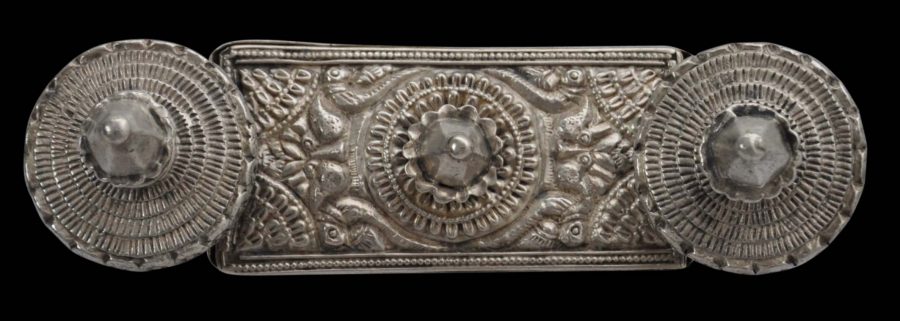Enquiry about object: 4989
South Indian Silver Chauka-form Lingam Pendant
Karnataka, South India 19th century
width: 13cm , height: 9.8cm, thickness: 3.6cm, weight: 348g
Provenance
Collection of (the late) Paul Walter; probably acquired in London.
This elaborate lingam casket (ayigula) is in the chauka form in that it has a horned cover, reminiscent of buffalo or cow horns, and symbolic of Nandi, Shiva’s bull mount or vahana, and Basava, who is credited with being the founder of the Lingayat sect who is deemed to be the lord of cattle and men and protects devotees from evil.
It is a substantial piece and is surprisingly heavy in the hand. It is made of solid silver, that is elaborately chased on the rectangular panel that faces downwards as worn, and elsewhere is plain.
That part of the cover that is chased is decorated with kurtimukha masks, parrots, and scrolling foliage.
The box has obvious significant age – it has been worn and used for the purpose for which it was made. Consequently, it has an excellent patina and with contours softened by wear and use.
It would have been worn by a wealthier lay member of the Lingayat sect. (Poorer adherents wore wooden lingam boxes.) It has been fashioned in two parts that are held together when the box is suspended from the necklace.
This box once carried a jangama lingam. Such lingams comprise a small piece of stone carved by specialist carvers that is then covered in a dark, protective compound called kauthi. This comprises a mix of lac, clay, sacred cow dung ashes, and marking-nut tree fruit juice or black antimony powder (also used as an eyeliner cosmetic.)
The Lingayat sect became prominent in the twelfth century as a reaction to Brahmanism. Many Lingayats today live in Karnataka, Maharashtra and Tamil Nadhu. The sect rejects the supremacy of the Brahmans; denies polytheism and acknowledges Shiva as the one true god thus rejecting Brahma and Vishnu. It rejects caste distinctions, rebirth, pilgrimages, temple worship and sacrifice; does not burn its dead but buries them; does not allow child marriage, and does allow widows to remarry.
The Lingayats believe movable lingams to be the only true symbol of Shiva. Individuals are initiated into the sect as they enter adulthood. A consecrated lingam uniquely created for each initiate is presented by a community guru amid prayers and ritual. The lingam is created only for the individual and must be protected and guarded, hence the need for a protective box as shown here. All Lingayats carry their personal lingam with them at all times. After death they are buried in a sitting position with the lingam in the left hand.
Overall, this lingam box is a superb and rare item for its age and quality.
A similar example is illustrated in Utracht (1997, p. 135). Another is illustrated in Barnard (2008, p. 26).
References
Barnard, N., Indian Jewellery, V&A Publishing, 2008.
Utracht, O., Traditional Jewelry of India, Thames & Hudson, 1997.


